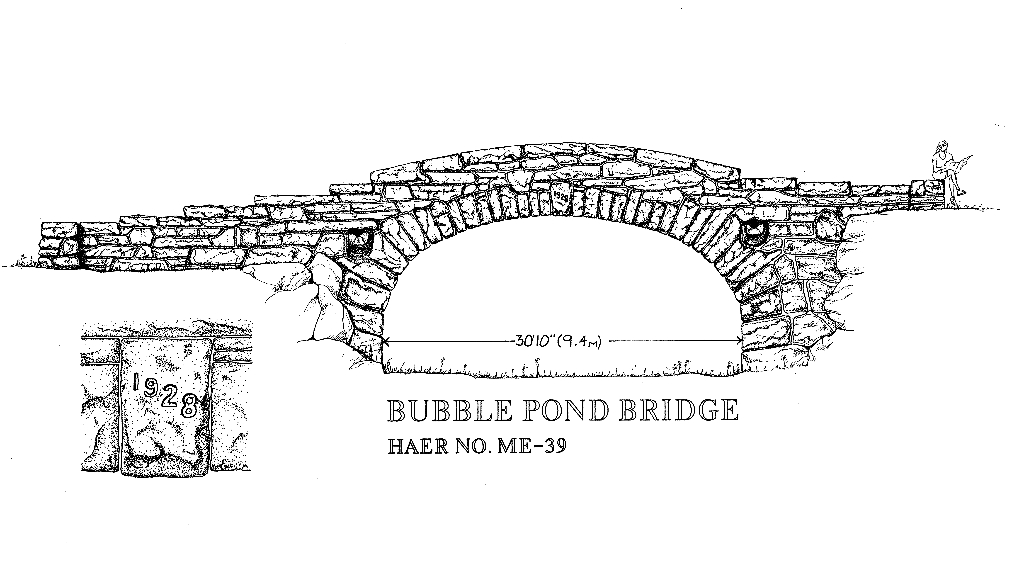
Bubble Pond Bridge (1928) was the tenth of 17 bridges constructed along 57 miles of carriage road on Mount Desert Island between 1917 and 1940. It carries the Bubble Pond Carriage Road over a portion of the Jordan Pond/Eagle Lake motor road that was abandoned when that road was realigned in 1962-1964 to avoid a sharp curve. This bridge is now a relic with no function. Access to a parking lot along the shore of Bubble Pond remains.
The simple rustic masonry arch bridge is constructed of unreinforced concrete clad with rough-dressed random-laid rubblestone. It is 75-feet long, 20-feet at highest, with an elliptical arch that spans 31-feet with rough-dressed radiating voussoirs. Keystones on both sides are inscribed with the 1928 construction date. Arched parapet walls are flanked by stepped wingwalls that have large projecting stone scuppers and which terminate in squared endposts.
Beatrix Farrand would later make plantings recommendations to fill the spaces around the bridge as thickly as the ledge permitted. She suggested maples, oaks, birches, as well as dewberry, clematis, and sumac.
As John D. Rockefeller, Jr. went about planning and funding Acadia's carriage road network, he determined that the 'Bubble Pond-Triad' carriage road should cross the new 'mountain' motor road he was also funding and designing, necessitating a bridge. He turned to New York architect William Welles Bosworth, who responded with a formal multi-centered arch bridge with open balustrade and finely-cut voussoirs. Although Mr. Rockefeller accepted the design, the NPS Assistant Director Arno Cammerer objected to it as being too formal for a national park. Bosworth prepared a second design, eliminating the open balustrade but retaining the carefully cut stone and formal voussoirs. This design was again rejected as being too 'citified.'
The National Park Service then designed a more 'rustic structure' of roughly-quarried stone, making it possibly the only carriage road bridge of solid masonry construction. Although disappointed, Mr.. Rockefeller agreed to fund the construction of this design. His engineer, Paul D. Simpson, prepared the working drawings, and the bridge was constructed in 1928 by Philadelphia mason Pringle Borthwick.
Is there something we missed for this itinerary?
Itineraries across USA


















































